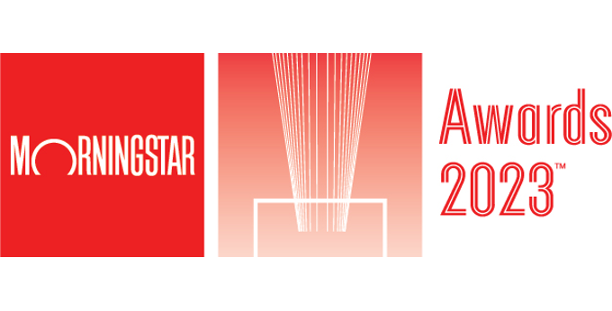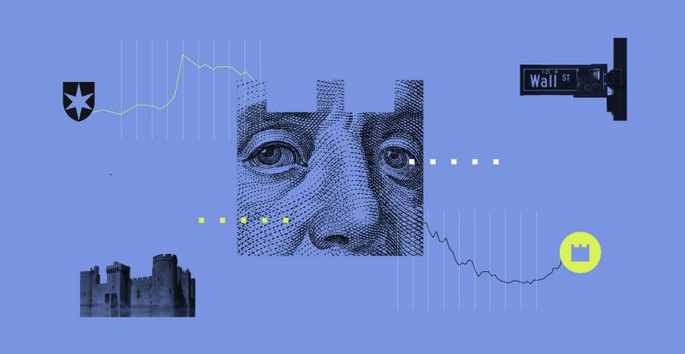
Let’s learn about the fund a little bit through our short interview with the winner.
How was the portfolio positioned to navigate the market volatility in 2022?
Since 2022, inflation has been rising globally. Russia-Ukraine war caused food and energy shortages, which lead to spike in headline inflation. Developed economy also faced supply bottlenecks after reopening economy, causing supply-demand mismatch. Supply bottlenecks were caused by shortage of labors and supply disruption from China lockdown. Therefore, central banks, globally, has hike rate to fight inflation. EM countries got hurt as they need to rise rate at faster pace to keep FX and fund flows stable. Our team has been monitoring macro situation consistently, as well as, monitoring the tendency of BOT actions. Last year, we had conviction idea that inflations were on the rising trend, and we allocated more weight into shorter duration bonds. We also find reinvestment opportunity when interest rates got higher because some of our bonds matured and we reinvested at better yield. In short, during the rising rates environment, short duration limits downside risks and create reinvestment opportunity at the same time.
In addition to that, we leverage our capability in credit selection. During the last year, after market sold-off, we have seen so many investments opportunity in credits with short duration. Rather than sticking to well-known rating agency, which can be laggard in rating adjustment, we have our own credit model. We have invested in many credits that had good yields without having any default or credit downgrading. We believe that our model is very effective and can make us confidence in taking credit risks. Our model incorporates both top-down and bottom-up to assess the ability of companies to make payment by using internal scoring system. Certainly, both qualitative and quantitative analysis are included in our model. As a result, the fund had no default last year, and gain from capital appreciation aftermarket absorb the lower risks of asset that we had invested.
Lastly, our company has strong culture of assertiveness and opening for information sharing. Our team shares information with global equity team to get more understanding on external factors that could affect Thai economy and Thai fixed income market. We also consistently communicate with Thai equity market for industries outlook and opinions. This allows us to manage risks in more dimensions. To conclude, the culture that open-up for idea sharing resulted in more investment insight, which turned to strong performance.
What are the strengths of your investment team that make the fund successful?
These are 3 of our strengths that contribute to consistent strong performance.
1. Intensive Investment Processes
As we mention earlier, we utilize highly effective credit model. That’s make us more confidence to invest in higher yield bond without facing defaults. As parts to complete credit modelling processes, we consistently monitor earning releases, company visiting, meeting management of company invested, and sourcing information from external analysts. We then score each factor to model with due diligence to evaluate ability of company to make payment and do valuation accordingly.
2. Due diligence to make rational analysis and decision.
Our team have passion to perform and has strong desire to be number 1. We always look for now investment opportunities and get over the limitations of investment capability. For example, in the last year, we found opportunities in deposits to foreign banks, which gave us very attractive returns with minimal credit risks. In the view of managing portfolio with care, we have internal meeting every week to conduct portfolio sensitivity analysis into different scenarios. As a result of dynamic allocation, we achieved strong return with minimal volatility. Lastly, each of our decision is based on team call. We minimize individual biases, and we take execution seriously.
3. Strong network with internal and external parties
We have strong network with issuers, brokers, and internal sales team. Because we have been investing in many companies for long time, we gained knowledge on company businesses and know their managements. This provides us the investment opportunity. Secondly, we have strong relationship and bargaining power to brokers or dealers. Most of the time we can negotiate for better prices. Lastly, the example would be the information sharing from sales side. Most of the times, we have been informed on the expected inflows and outflows for the fund. If we were informed that there will be low outflows, we will allocate more to higher yield bond. Ability to predicts fund flows help us to construct more efficient portfolio.
What is your view on current and the outlook of interest rate level? How does that tie into how your portfolio is positioned?
Our view on Thai interest rate paths is based on internal and external factors.
1. From internal economic factors
Since beginning of this year, Thailand, as well as ASEAN countries, have China reopening theme as a key catalyst. We expect more tourism inflows into country. This would help economy via stronger consumption data, from low based last year. Be noted that employment in tourism sector accounts for 1/5 of total employment. We also believe that consumption can gradually expand amid high private debts level, and BOT will raise rate accordance with economic recovery. However, we see some probability that BOT will hike rates faster if inflation spike up again for whatever reasons. BOT need to keep FX strong to keep low energy import price, which could significantly affect headline inflation. Currently, we make manage portfolio with cautious view on interest rate risks.
2. Rate normalization following DM economies.
We believe that BOT has been studied the increases in policy rates by many countries and the effects of the policies. We expect BOT will likely apply rate hiking policy in accordance with the recovery of Thai economy. Increasing rates will stabilize currency and fund flows, and also provide BOT with the tool to stimulate economy if economy is in recession in future, via recutting rates. This process can be called “Policy Space”.
Where do you feel that the investment team or the investment process can be improved upon in the future?
From time to time, we have very strong teamwork. However, we see significant room for improvement, and we are motivated to do that. The first thing is to improve investment processes by construction model to provide rating to offshore and onshore investment, by scoring opportunities and risks by type of issuers, IGs vs HYs, and sector wises, through macro and valuation analysis. Furthermore, we will improve intensity of credit modeling by assessing into more insight, for example, capability of management teams, product life cycle of company invested, company strategies and business direction, corporate governance, and cash flows generating capability.
How would you recommend to investors who interested in Short Term Bond fund?
We admit that making a call investment view is very difficult under this situation. There are so many uncertainties, and we see the chance of recession still there for DM counties. Stock prices are at pivot, and do not fully reflect to chance of recessions. Risk of earnings downgrade can be seen from our view. The chance that interests rates can go higher than expected if core inflations are too sticky to fall, as well as the war is not yet end. Investing in Thai stocks could be defensive from external factors. However, the price of interesting sectors has gone up so quickly leaving us very high valuation anticipating China reopening theme. We recommend that security selection plays important roles in this situation. However, principal protection strategy by diversification to defensive assets are important as well, and we recommend taking short duration with credits. This will help investors mitigate interest rates risks while providing source of liquidity if investors see good investment opportunity in future.







:quality(80)/cloudfront-us-east-1.images.arcpublishing.com/morningstar/FMIOE2PGGNFKPD2J6WYZS3MXMU.png)

:quality(80)/cloudfront-us-east-1.images.arcpublishing.com/morningstar/6JNXNDYK3RH73MZK3IZ6UTSIAY.png)






